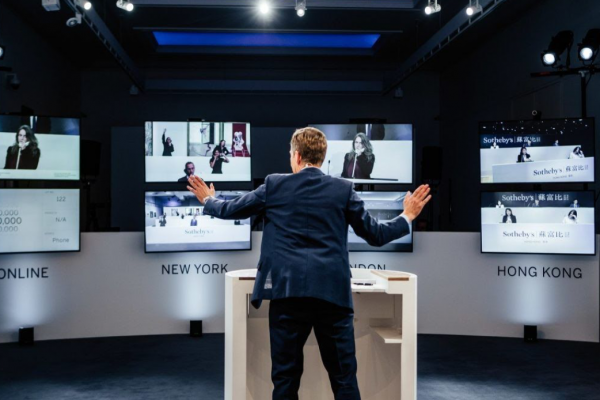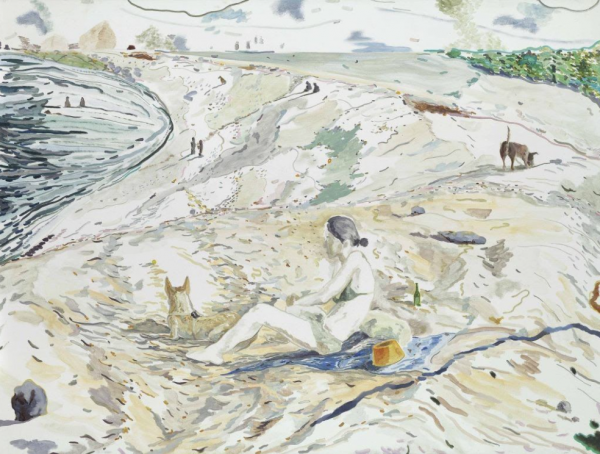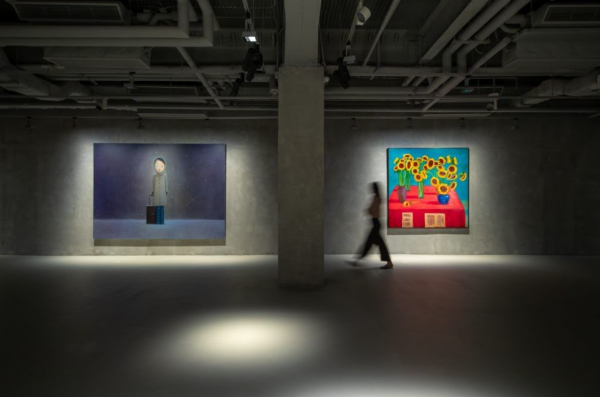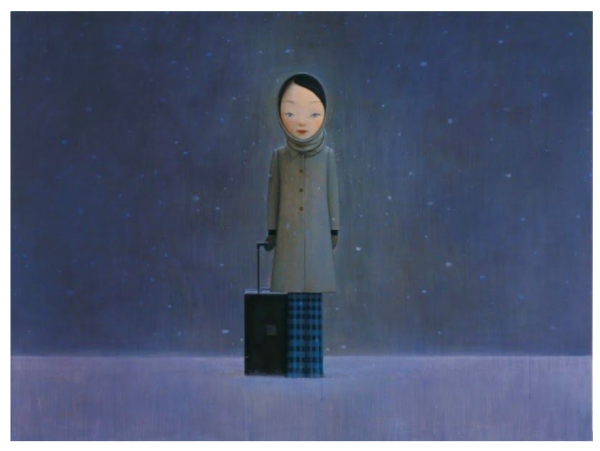
On June 30, the eve of the 23rd anniversary of Britain’s handover of Hong Kong to China, Beijing passed a national security law that changed the semi-autonomous city overnight.
The law, which bypassed the local legislature and prohibits acts and activities related to secession, subversion of the state, terrorism and collusion with foreign forces, gives police sweeping powers to conduct warrant-less searches and surveillance. Certain protest slogans and songs have been deemed illegal. Books by pro-democracy activists at public libraries have been purged. And fearful Hongkongers have rushed to move their money out of the city and scrub their social media feeds in fear of getting arrested for past statements.
Yet the Hong Kong art market seems to have no concerns at all.
The annual spring auctions, which were postponed until the summer because of the coronavirus pandemic, took place the week after the law was passed and posted solid results.
“Artworks have an inherent value within a global marketplace, which should not be impacted by short-term political events in any one region,” Jonathan Crockett, a chairman at Phillips, told Artnet News. “In the long term, art has consistently proven to be a safe investment.”
All three major Western auction houses boasted strong numbers. Sotheby’s, which drew in $76.8 million in its contemporary art evening sale on July 9, said it was the most lucrative such auction the company ever staged in Asia. (All figures are in USD unless otherwise noted.)
Christie’s, meanwhile, pulled in a combined $125 million through its contemporary art sales on July 10 and 11, and the Hong Kong leg of its relay sale. Phillips also reported its best Asia-based sale of 20th-century and contemporary art and design, which drew $35.1 million.
Records for single artists were also broken. A painting by Sanyu, White Chrysanthemum in a Blue and White Jardiniere , sold at Christie’s for $24.8 million, a new auction record for a still life by the artist.
And when it came to Western artists, Sotheby’s sold Hockney’s 30 Sunflowers for $14.8 million, making it the second-highest price ever for a Western artwork sold at auction in Asia.
Collectors are also trending younger. Christie’s said 25 percent of its buyers this season were millennials, and Phillips noted that collectors in their 30s were bidding for works by emerging Western artists.
“The strong sale results demonstrated the art market to be vibrant and resilient, amid a challenging backdrop,” said Yuki Terase, Sotheby’s head of contemporary art in Asia. “Art certainly could be less volatile compared to other assets.”

Between them, Christie’s, Sotheby’s, and Phillips not only posted multi-million-dollar sales of
blue-chip works; they also tested the waters with artists from Hong Kong.
“This was the first time we included such a wide offering of works by Hong Kong artists in our sales,” Crockett said. “We believe it is important to bring attention to and support our local artists here in Hong Kong, so would be happy to continue doing so in the future.”
Phillips featured the biggest line-up of Hong Kong artists, including Chow Chun-fai, Lee Kit, Adrian Wong, and Trevor Yeung.
One local, Firenze Lai, had works on sale at Phillips and Sotheby’s: one painting, The Army , fetched HK$237,500 ($30,569) at Phillips, nearly four times its high estimate, while Sotheby’s set a new auction record for her work with Happily Ever After , which was exhibited at the central pavilion of the Venice Biennale in 2017. The work sold for $338,546, more than four times its estimate.
Paintings by the late Matthew Wong, the self-taught painter who was raised in Hong Kong and died in 2019 at the age of 35, were also well received: Warmth sold for more than HK$2.6 million ($335,369) at Phillips, while Homecoming fetched HK$3 million ($386,978) during the Hong Kong leg of Christie’s relay sale, more than quadrupling its high estimate.
At Christie’s contemporary art evening sale, Chris Huen Sin Kan made his auction debut with Doodood and Mui Mui in Shek O (2014), which sold for HK$900,000 ($116,093), six times the pre-sale estimate. It was the first time the auction house offered a work by a local artist in its Hong Kong evening sale.
“Hong Kong artists offer a fresh perspective, often experimenting with innovative techniques,” said Francis Belin, president of Christie’s Asia Pacific operations.
“There is tremendous interest in art coming from Hong Kong these days. The city is one of the most important sites of the 21st century economically, socially, and politically, so the interest should come as no surprise,” said Willem Molesworth, director of the de Sarthe Gallery in Hong Kong.
He noted that Wong and Huen in particular “have received a stamp of approval from some important Western galleries and [have] seen their markets boom as a result.”
And it’s not only auctions that are getting a slice of the pie: homegrown artists also seem to be selling well through local galleries.
Molesworth, who sits on the organizing committee of Unscheduled, an art fair organized by the Hong Kong Art Gallery Association that focuses on regional and local artists, said most of the participating galleries managed to make sales when the fair was held in June, despite the ongoing pandemic and national security law. De Sarthe, he said, sold out its booth of works by Hong Kong artist Mak Ying Tung 2.

But What Will the Future Hold?
Yet there are still reasons to be concerned about the market’s long-term stability.
Although Beijing and the local government in Hong Kong say the new security law will only target a small group of people, growing fears about the city’s autonomy may erode market confidence in the future.
“It is a developing situation and it is too early for us to speculate on any impact the law might have on Hong Kong, its arts community, or any arts-related business operating in Hong Kong at this stage,” an Art Basel spokesperson told Artnet News.

Yet some people are already making plans around the law. As young pro-democracy politicians and activists flee the city, some artists are even considering taking up the UK’s new offer of a path towards citizenship for qualified Hong Kong residents.
A poll of 183 members of the American Chamber of Commerce in Hong Kong showed that 76 percent of respondents were concerned about the national security law. Over half of them said they felt “less safe” living and working in the city. And the New York Times announced on Wednesday that it will relocate part of its Hong Kong office to Seoul as a result of the law, as a veteran Times correspondent had his work permit renewal denied.
Asked if Art Basel will be censoring any artworks deemed subversive in future editions of the Hong Kong fair, a spokesperson for the event said no such issues had arisen in the past, but declined to comment on any changes brought by the new legislation.
Credit: Artnet.com
